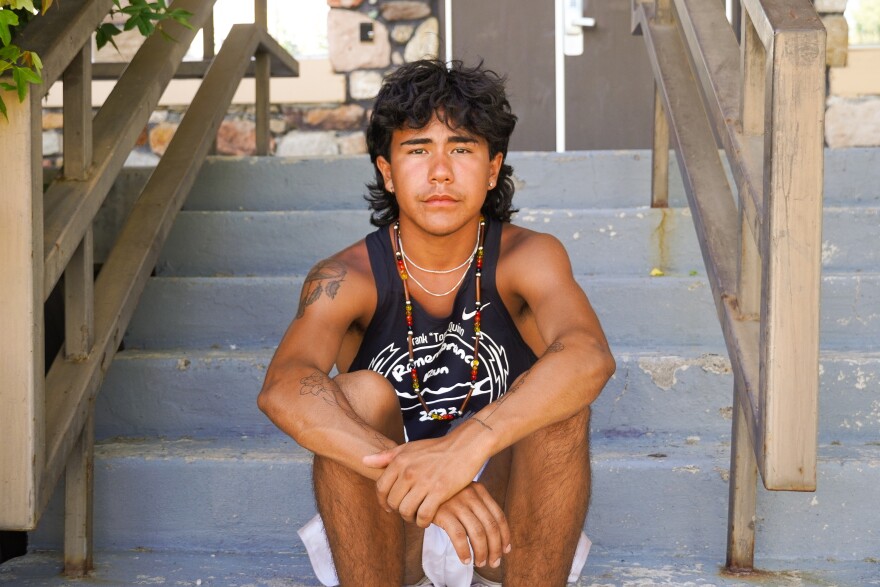On August 13, 19-year-old Ku Stevens and a group of runners arrived at the Stewart Indian School after a two-day ultramarathon that began at the Yerington Paiute Tribe Park.
Stevens, a citizen of the Yerington Paiute Tribe, started the run in 2021 to honor the survivors and victims of Indian boarding schools.
Around 60 people took part in this year’s run, Stevens said. High temperatures and physical exhaustion did not stop them from running 50 miles.
“It was really good this year,” he said, “There were a lot of new people and [it’s] always a pleasure to run with the people that I love.”

Stevens’ favorite part of the run was the overnight camping.
“We all gather up in a circle, and we raffle off items, and then, we just take time to go one by one in a circle to share our stories. I heard some great ones this year, people finding their identity and really finding out who they are, and what it means to be themselves,” Stevens said.
The run ended with a visit to the Stewart Indian School Cemetery, where participants left offerings for the victims. It was a very emotional moment for many people, he said.
“A lot of people cry. This year, I managed to hold it together pretty well but it's sacred, it's a very sacred and spiritual place, you could feel the energy when you walk in there. It was good visiting, it was healing, very healing,” he said.

Stevens’ main inspiration for the run is his great-grandfather Frank “Togo” Quinn, who ran away from the Stewart Indian School three times as an 8-year-old.
“You could just imagine one of your nieces, even your little brother or sister trying to run 50 miles away over a desert without a map, without water, without food, or without a pair of shoes. It hurts thinking about those things,” Stevens said.
This year’s Remembrance Run will be the third and last year that Stevens and his family host the event.
“Frank ran away three times so we've come to the conclusion that doing it three times, and him doing it three times is a good way to end it. We just hope that the story of it kind of lives on well past after we end it,” he said.
The Stewart Indian School, now a cultural center and museum, was founded in 1890 and operated until 1980.

When the school first opened, it focused on erasing traditional American Indian ways of life and replacing them with mainstream American culture.
In later years, students were encouraged to practice their native languages and culture alongside the school’s curriculum of academics, vocational training and athletics.
Denzo Gomez participated in the run for the first time with his aunt. The 17-year-old runs cross-country at Bishop Union High School in California.
The first 10 miles were the hardest part, he said, but he was glad he was able to hear stories from members of the community.
“We heard stories about so many kids that families couldn't afford taking care of all of them. So they did send their children here. But most of them ran away and some didn't make it home. Just a lot of emotions,” Gomez said.





